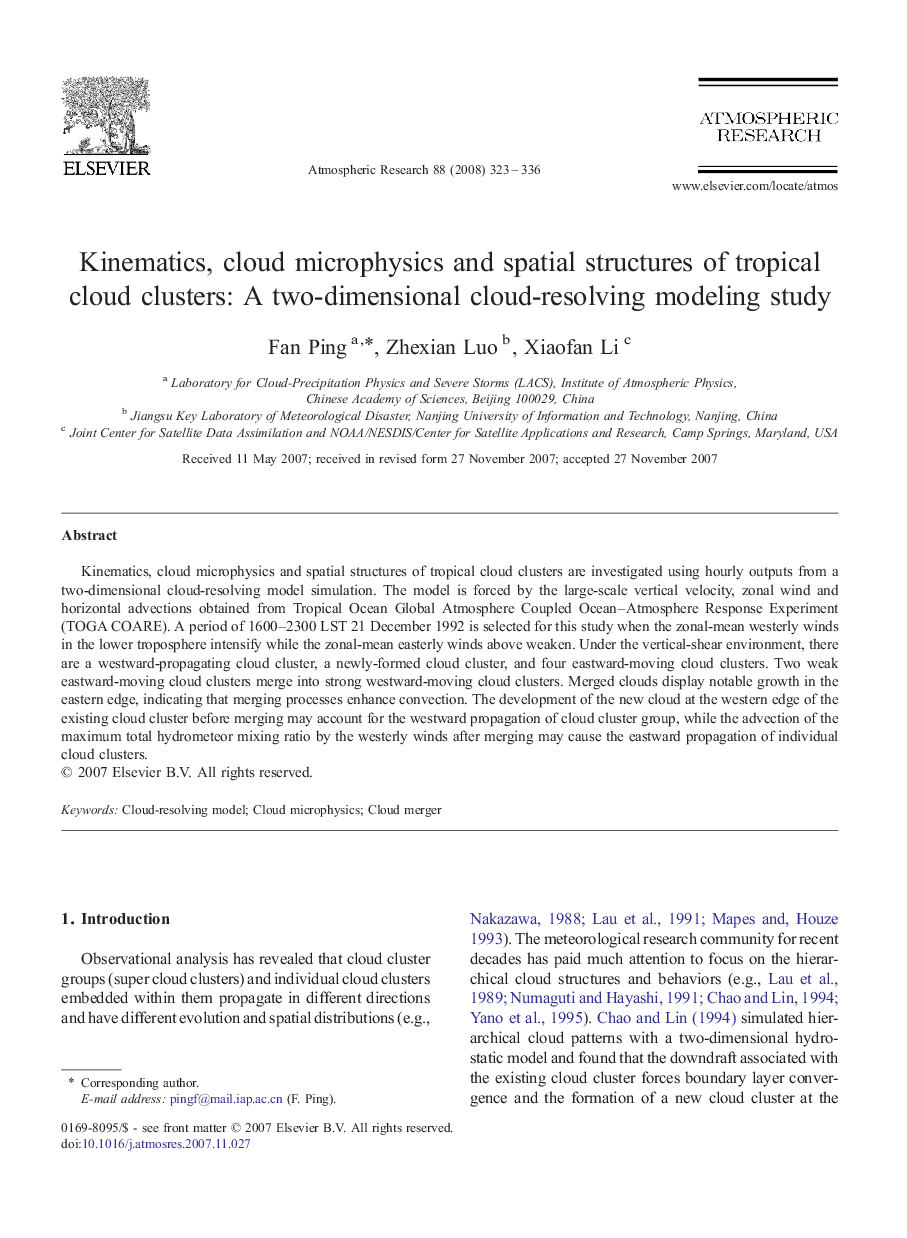| Article ID | Journal | Published Year | Pages | File Type |
|---|---|---|---|---|
| 4451138 | Atmospheric Research | 2008 | 14 Pages |
Kinematics, cloud microphysics and spatial structures of tropical cloud clusters are investigated using hourly outputs from a two-dimensional cloud-resolving model simulation. The model is forced by the large-scale vertical velocity, zonal wind and horizontal advections obtained from Tropical Ocean Global Atmosphere Coupled Ocean–Atmosphere Response Experiment (TOGA COARE). A period of 1600–2300 LST 21 December 1992 is selected for this study when the zonal-mean westerly winds in the lower troposphere intensify while the zonal-mean easterly winds above weaken. Under the vertical-shear environment, there are a westward-propagating cloud cluster, a newly-formed cloud cluster, and four eastward-moving cloud clusters. Two weak eastward-moving cloud clusters merge into strong westward-moving cloud clusters. Merged clouds display notable growth in the eastern edge, indicating that merging processes enhance convection. The development of the new cloud at the western edge of the existing cloud cluster before merging may account for the westward propagation of cloud cluster group, while the advection of the maximum total hydrometeor mixing ratio by the westerly winds after merging may cause the eastward propagation of individual cloud clusters.
